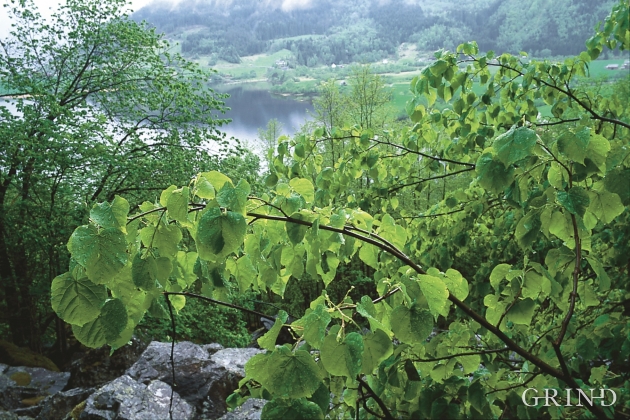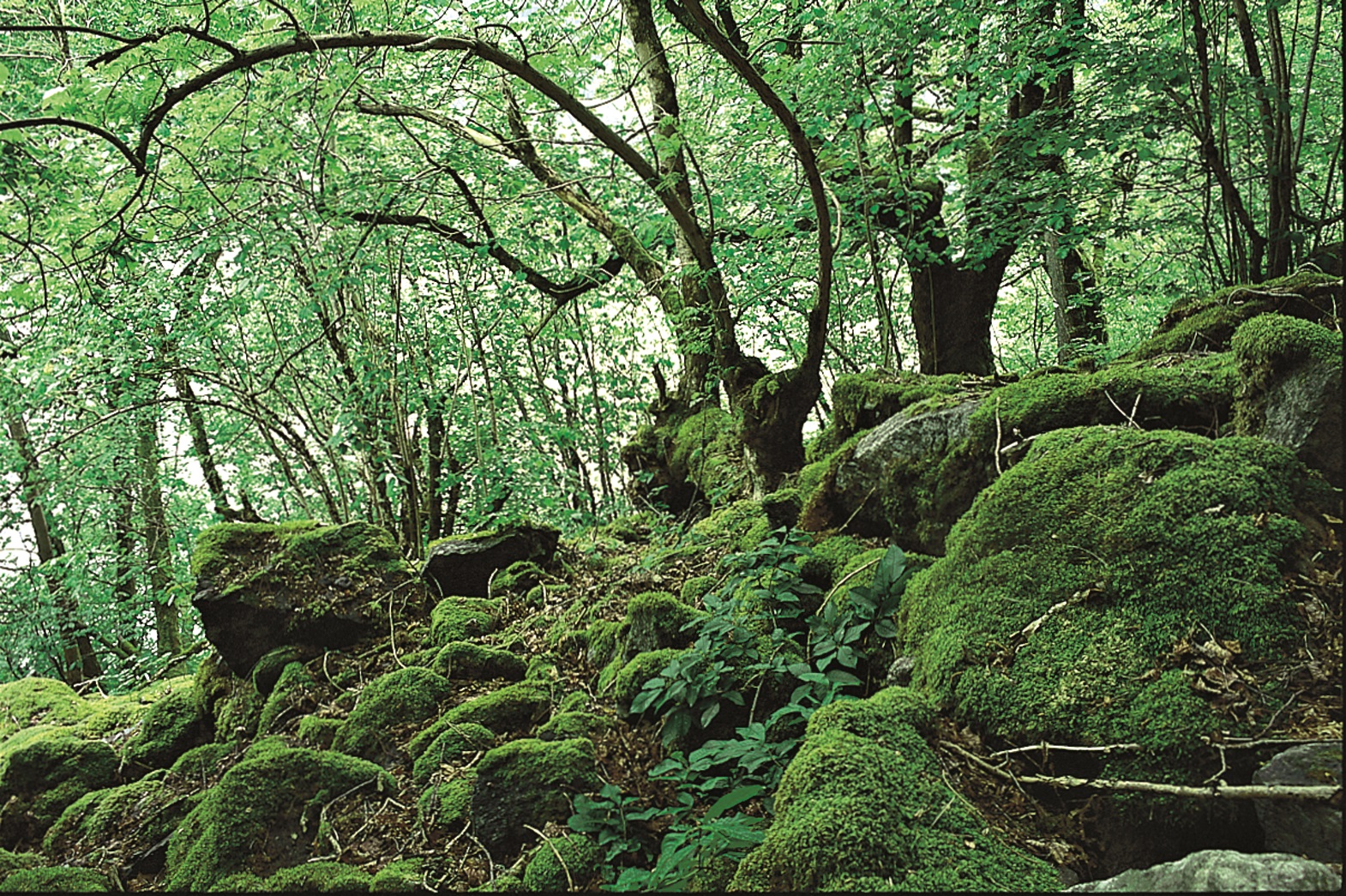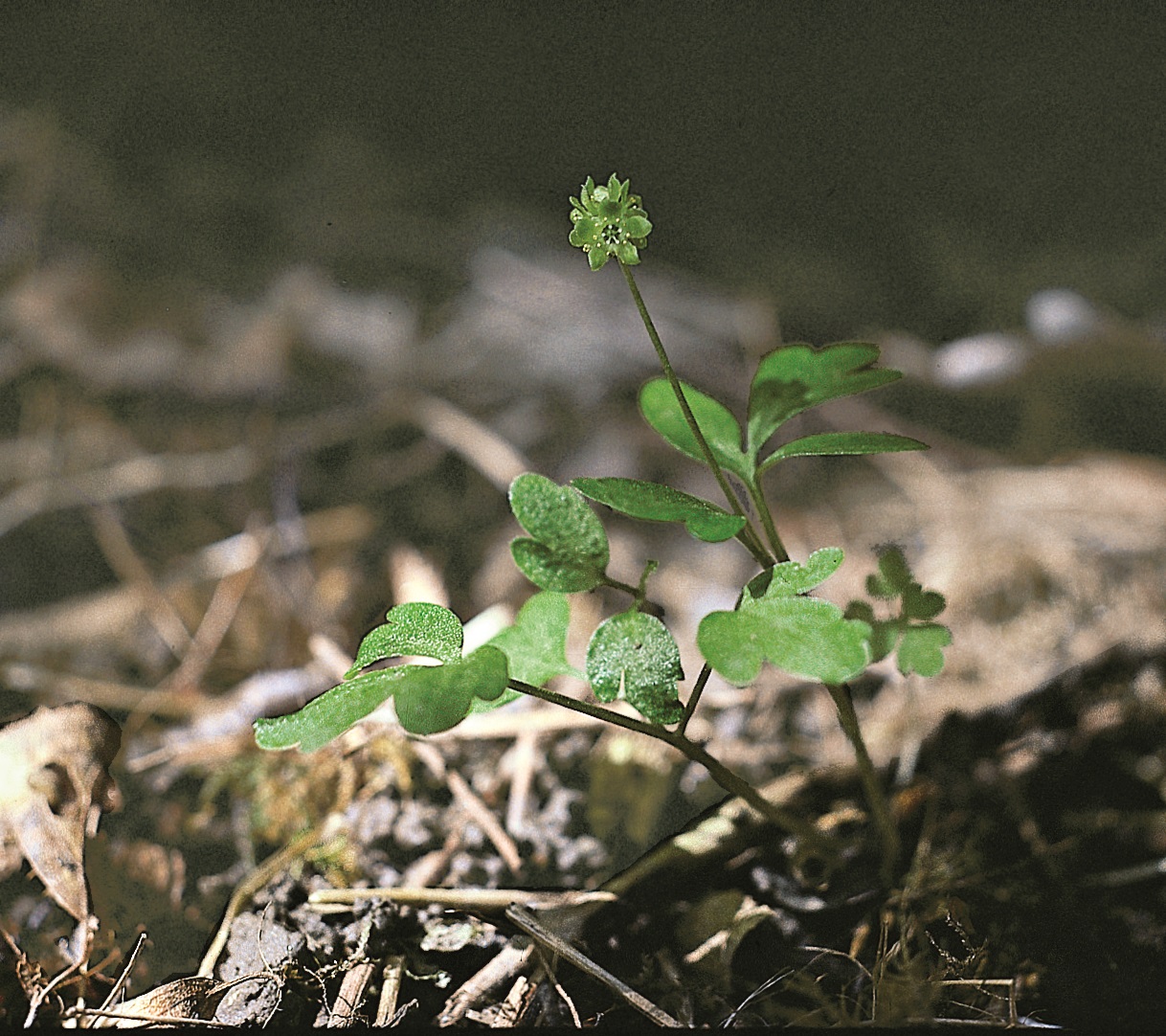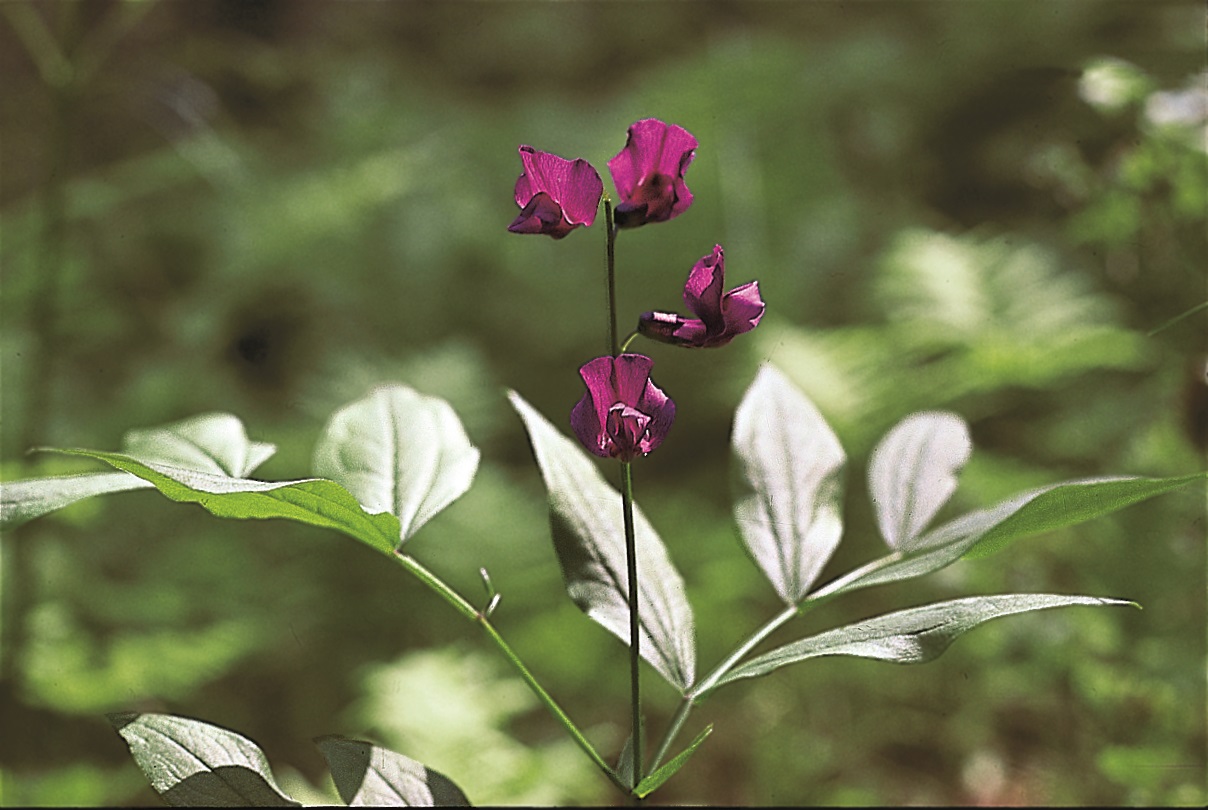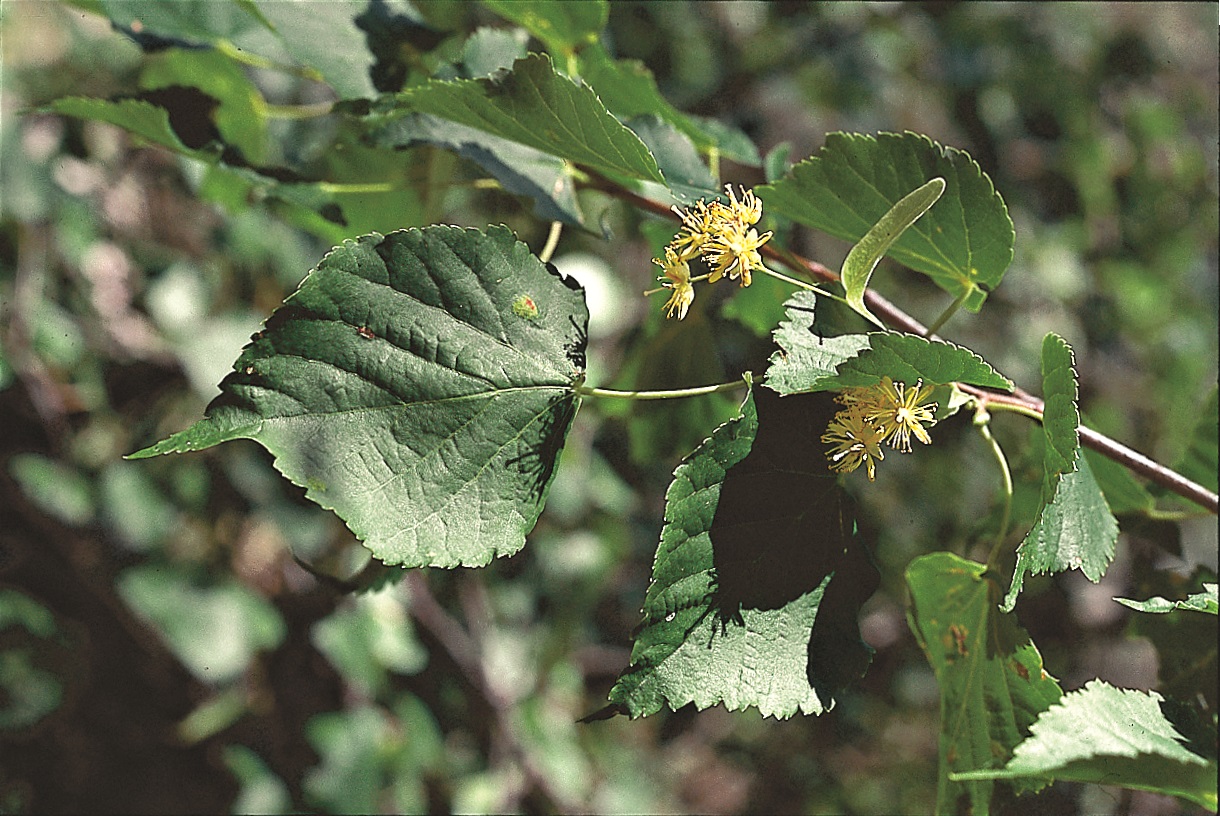Published: 14.08.2015 | Author: Bjørn Moe
Lime forest at Joberget. (Svein Nord)
Flowering lime is one of nature's blessings: The nectar gives clear honey. The flower is used as folk medicine. From the inner bark of the lime tree one can make strong rope. Elderly folk can still tell how they got a weather report from the lime tree. If it smelled strong, it was probably going to rain. Lime often grows together with elm, ash and other tree species of the deciduous forest. Pure lime forests are rarer. Granvin has Hordaland's biggest lime forests. Several of them are protected, as is the forest on the steep slopes of Joberget.
The lime tree is one of the county's most warm-loving tree sorts and it therefore thrives best in easterly areas. The best places for this tree with heart-shaped leaves to grow are on steep terraces under south-facing slopes, from the fjord up to about 300 m a.s.l. There can be much lime where there are scree and landslide grounds; this tree species is a specialist at managing the steep topography in Granvin. It is not unusual to see lime trees hanging out over shelves and ravines in the mountains.
Its ability to reproduce is outstanding. New lime trees grow up from roots and trunks; even branches that touch the ground may take root. In this way a whole forest may grow from a single tree. This is a necessary strategy for survival, since the lime seed has quite a poor ability to sprout.
Lime trees thrive best in fertile soil, but is itself good at improving soil quality. The lime leaf contains calcium, and since the leaves are thin and brittle they are easily broken down to make rich loose soil. Farmland and fruit orchards in Hordaland may have been lime forests before they were cleared. A lime forest often has a rich flora, with many plants that are typical of the deciduous forest. There can nonetheless be a lot of shade on the forest floor, since the lime tree grows such dense crowns. If the lime forest has first taken root, there is not much that can threaten it. The trees can be many hundreds of years old. At Utne there is a very old, protected lime tree that measures a whole eight metres in diameter. It is called the "Kjellarlinda" ("cellar lime tree"), and is among the thickest lime trees in the country. But it is not tall, only ten metres. Since the lime tree tolerates a lot of air pollution, it manages well in cities. The tree is often used to form alleys, but it is also planted as a freely standing tree.
The old lime trees are for the most part free standing. They are often pollarded, so they lack a high main stem. The lime leaf has been gathered as animal fodder, but there was disagreement as to its food value. The pollarded trees have in any case been used for other objectives also. The lime tree is one of our most important fibre plants, and it is almost impossible to find better material to make ropes of among the wild-growing plants of Norway. The wood is light and loose, and not very strong, so its use as building material is therefore limited. But its soft wood is much used in wood carving - and the knife doesn't have to be sharpened as often as when working with harder tree species.
- Nedkvitne, K.; Gjerdåker, J. 1997. Lind i norsk natur og tradisjon. Norsk skogbruksmuseum. Særpublikasjon 12.

